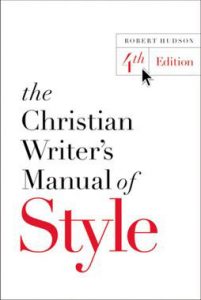Style Guides

Resources: Style Guides
If you’re creating anything… yes, anything, you need a style guide. A style guide will establish a system of defaults and styles within your organization that govern a wide range of subjective–and some objective–ways you describe, spell, design, punctuate, or even refer to God and concepts of faith and theology.
In some areas, you may think it’s no big deal, or there is no right or wrong way to indicate 2PM vs 2:00 p.m.. Well, how about referring to The Comforter vs the Spirit of the Lord. You may say, well that depends on context. Yes, and no. Consistency matters. For example, someone on your team contributes an article or content that uses the term Holy Ghost in place of the Holy Spirit. You might tell them, “Oh, I’m sorry, we don’t normally use that term, but instead prefer the Holy Spirit.” That’s your prerogative, but it’s holding them accountable to what is in your mind, or to undeclared precedence.
What about when it comes to referring to simply capitalization… Should they capitalize Heaven? Gospel? Old Testament? The reality is that it is best to preemptively establish the rules on these things and many more in this “bible of your brand”. Here is how Wikipedia defines a Style Guide.
OK, You’re sold on the value and importance to have one. Get started building yours!
Style Guide Basics
 Start with something global. A great resource worth considering is The Christian Writer’s Manual of Style (Amazon or Ebay). “It includes subject matter from other authorities but it is handy to have it all in our place,” as one reviewer stated. Other more established options are the Chicago Manual of Style or Associated Press (AP) Style. Pick one as your default go-to. They typically offer hard copies and/or subscription models for your team to access and reference as needed.
Start with something global. A great resource worth considering is The Christian Writer’s Manual of Style (Amazon or Ebay). “It includes subject matter from other authorities but it is handy to have it all in our place,” as one reviewer stated. Other more established options are the Chicago Manual of Style or Associated Press (AP) Style. Pick one as your default go-to. They typically offer hard copies and/or subscription models for your team to access and reference as needed.- Determine internal exceptions or House Styles.
- These may be simply the preference of your org leader, perhaps internal acronyms, perhaps you think is simply easier or trendy to abbreviate something, maybe you want to wordinize a non-word.
- It may establish the default translation of Scripture you prefer to cite.
- It may affect things on your website. Such as referring to “Give” “Donate” or “Partner Financially”? These all carry nuanced meaning shifts but consistency matters.
- Consider potentially insensitive or offensive terms. This can be a moving target as society changes but be aware that your words matter. It may be good to list some specifically, as they relate most to your ministry. Create a list of preferred terms that might commonly arise in your org’s content.
- Design rules. There should be an entire section of your Style Guide dedicated to the governing rules of how your visual brand is curated. This includes things like:
- Colors
- Logo usage
- Spacing
- Photographic styles
- Fonts
- Share your Style Guide with contributors and staff so all are aware.
- Communicate changes to this document over time, so your team is aware of any updates.
Need help in clarifying or building a guide that’s best suited for your needs? Contact us today to schedule a Discovery consultation.
[Coming soon… templates and samples.]
If you found this helpful, let us know, with a comment below or contact us today.



This whole concept was new to me. Looking forward to when you have an example or two to look at. This will really help. Thanks!
Thanks for the note. Please subscribe for future updates and resources and you will be notified when there are starter templates available.